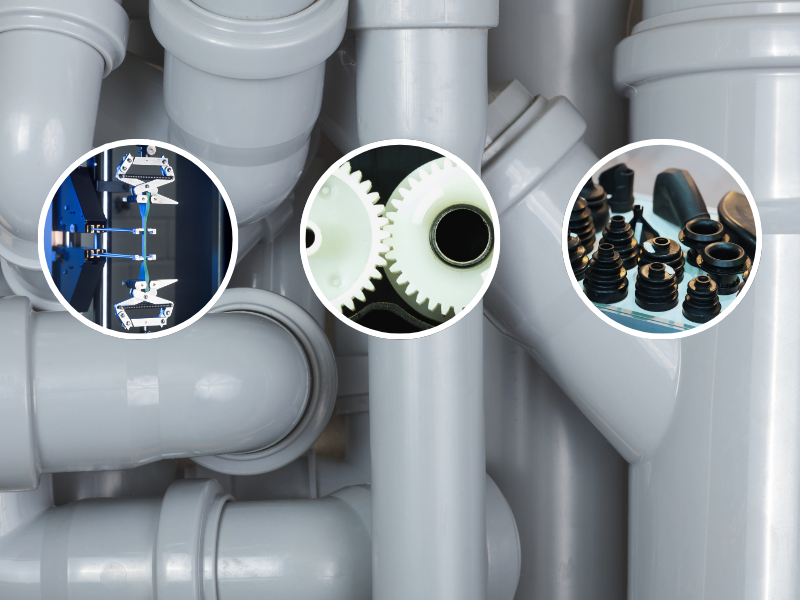Plastics and rubbers don’t always behave the way designers expect - especially under stress, heat, or long service times.
Creep testing is an essential tool for predicting the long-term durability of polymers. This FAQ answers common questions about creep, the gradual deformation of polymers over time. From what causes plastics to deform, to how the environment accelerates creep, our experts explain the basics and why laboratory testing is essential.
For a deeper dive into testing methods and durability prediction, see our full
Creep Testing Explained guide
What causes plastic and rubber to deform over time?
Plastics and rubbers are viscoelastic materials, which means their properties depend on time, stress, and temperature. Even at stress levels well below yield strength, components can gradually deform - a phenomenon known as creep.
How does creep affect material performance?
When load is applied, polymers show an immediate elastic response, followed by progressive permanent creep deformation. Over time, this deformation becomes cumulative, especially in demanding environments. Components may lose dimensional stability or eventually fail, even if they perform well in short-term tests.
What is creep strain measurement?
Creep strain tests measure how a material deforms under constant stress over extended periods - sometimes thousands of hours. These measurements help predict service life and are often repeated at different stress levels or temperatures to model performance more accurately.
How does the environment influence creep?
Temperature, load, and chemical exposure all affect creep rates. For example, elevated heat accelerates deformation, while certain chemicals (environmental stress cracking agents) can trigger premature failure at stress levels that would normally be safe.
What is creep rupture?
Creep continues until the material eventually fails - a process known as creep rupture. By generating rupture data in laboratory conditions, engineers can define long-term stress limits and understand how a polymer will behave over its service life.
Why is laboratory creep testing important?
Creep testing allows designers and manufacturers to:
- Validate material choices under realistic service conditions.
- Establish allowable stress limits.
- Reduce the risk of costly recalls, warranty claims, or compliance issues.
By replicating service environments in the lab, testing provides confidence in durability before products reach market.
Want to learn more?
This FAQ is a quick overview. For a deeper dive into methods, applications, and the business benefits of creep testing, download our expert guide:
Creep Testing Explained: Predicting Long-Term Performance in Polymers
Or, contact our experts to discuss how
creep testing or
fatigue testing can support your project.
